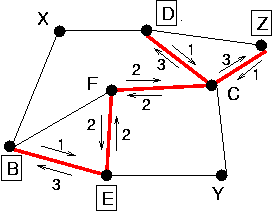
CMSC 417-F02 |
EXAM 2 SOLUTION |
Fall 2002 |
Time At B, dist to E At C, dist to E At D, dist to E
via C via E via B via D via C via E
0.1 3* 8 4* 2 3 1*
1.0 3* 8 4* 12 13 1*
1.1 5* 8 4* 12 15 1*
2.1 5* 8 6* 12 15 1*
3.1 7* 8 6* 12 17 1*
4.1 7* 8 8* 12 17 1*
5.1 9 8* 8* 12 19 1*
6.1 9 8* 9* 12 19 1*
7.1 10 8* 9* 12 20 1*
8.1 10 8* 9* 12 20 1*
* indicates the minimum distance entry
Stable at time 7.1.
GRADING:
a.

b.
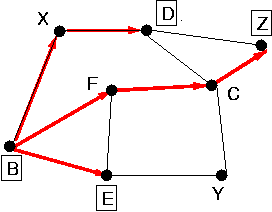
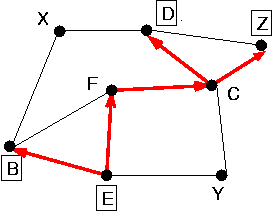
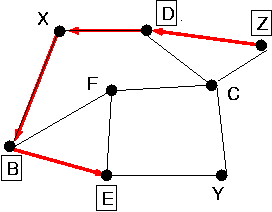
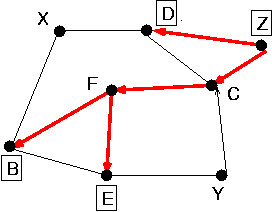
c.
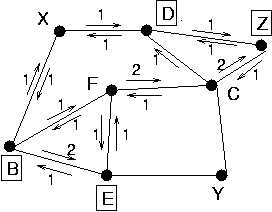
GRADING:
ISP A has 128.8.100.000 to 128.8.255.255, which can be advertised in many ways:
01100100
01100101
01100110
01100111
above addresses can be advertised as 128.8.100.000/22
01101000
01101001
...
01101111
above addresses can be advertised as 128.8.104.000/21
01110000
...
01111111
above addresses can be advertised as 128.8.112.000/20
10000000
...
11111111
above addresses can be advertised as 128.8.128.000/17
ISP B can similarly advertise its addresses in many ways:
ISP B has its old addresses and the addresses 128.8.100.000/24 and 128.8.101.000/24, which can be advertised in many ways:
GRADING:
a. Because the link state algorithm floods link cost updates, the updates originating at a node, say X, can arrive out of order at another node, say Y (because they took different paths and hence incurred different delays; note that each link itself introduces no reordering). So sequence numbers are needed for Y to ignore an older update than it has already received.
b. Because updates in the distance-vector algorithm travel only one link (they are not flooded), the updates that a node Y receives from another node X are always in order (some may get lost, but never reordered). So sequence numbers are not needed.
GRADING: